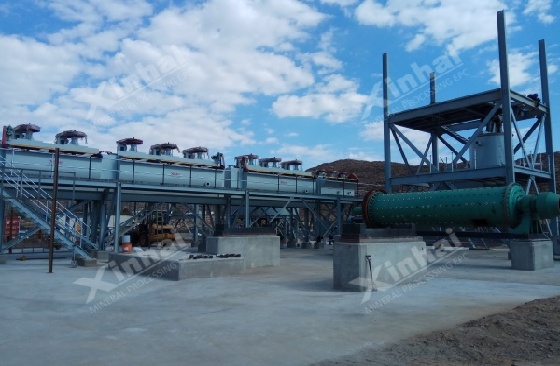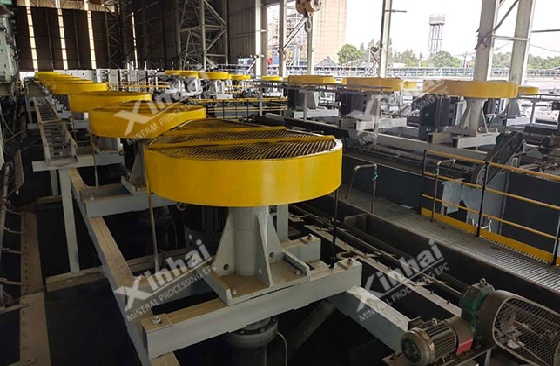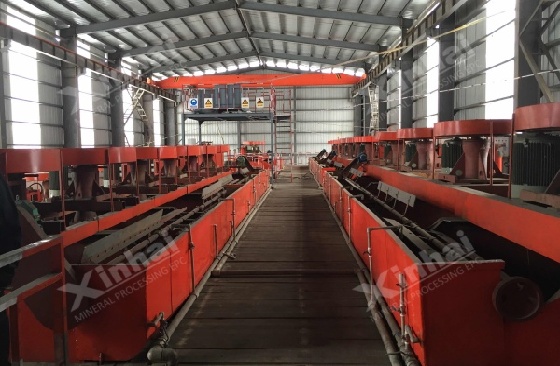If you want to know more information (such as product/process price, etc.), please contact us 24-hour telephone
Froth flotation is a common technique in mineral processing. It separates materials that repel water from those that attract it. You start by mixing chemicals into a blend of crushed ore and water. This makes some minerals water-repellent. Then, air bubbles are pumped into the mix. The water-repellent particles stick to the bubbles, float to the top, and form a frothy layer you can scrape off. It’s a neat process, but picking the right flotation machine matters a lot.
Flotation cells are the heart of any flotation machine. They create the space where air bubbles meet mineral bits. The size, shape, and mixing inside these cells are key to getting the most minerals out. Honestly, it’s fascinating how much the cell’s design can change the results.
The mechanical stirring type flotation machine works for many tasks. It handles roughing, sweeping, and reverse flotation for all sorts of metal ores. This shows how the cell’s setup adapts to different minerals and stages.
A standard flotation machine has a few main parts: impellers or rotors to stir the air and slurry, stators or diffusers to guide the flow, tanks to hold the mix, and tools to skim off the froth. Each piece plays a role in keeping things running smoothly.
The impeller, powered by a motor through a V-belt, churns the slurry in the tank. This stirring keeps particles and air evenly spread, which is critical for good results. Without it, you’d get uneven mixing, and that’s a headache no one wants.

Mechanical flotation machines use spinning impellers to blend air and slurry with energy. The strong mixing helps air bubbles and mineral bits bump into each other more often. It’s like stirring a soup to make sure all the flavors mix.
The Mechanical Agitation Flotation Machine has a forward-tilted tank. This design cuts down the distance the slurry travels and boosts air flow. It leads to better collisions between bubbles and particles, improving recovery.
Mechanical machines are flexible and great for big operations. They can process a lot of material, which is perfect for large mines. For example, a copper mine in Chile might use these to handle thousands of tons daily. But, they guzzle more power than other types. Plus, the moving parts need regular upkeep, which can add costs.
Mechanical stirring type flotation machines have a straightforward build. Yet, their high energy use is a downside. You’ve got to weigh the ease of use against the electric bill when choosing.

Pneumatic flotation machines skip mechanical stirring. Instead, they pump compressed air through nozzles or diffusers to make tiny bubbles. These bubbles grab onto the mineral particles. It’s a cleaner, less clunky way to do things.
Pneumatic flotation machines use air as the main tool to create bubbles. This cuts energy use a lot. It’s efficient, especially for specific jobs, like separating fine gold particles in a small-scale operation.
Pneumatic systems shine with tiny particles or when saving power is a priority. They’re also great when you want less wear on parts or cleaner processes. For instance, a lab testing rare earth minerals might pick pneumatic to avoid contamination.
Compared to mechanical stirring type flotation machines, pneumatic ones use less power and have less wear. That’s a big win for smaller setups or eco-conscious operations.
Hybrid flotation machines mix the best of both worlds. They use mechanical stirring and air injection to boost recovery. It’s like getting the strength of a mechanical system and the finesse of a pneumatic one.
Column flotation cells are a type of hybrid. They control froth depth and add wash water to improve mineral purity. This setup is great for getting cleaner concentrates, like in a zinc mine aiming for high-grade output.
Column flotation machines blend high efficiency from pneumatic systems with the control of mechanical ones. It’s a smart combo for tricky jobs.
Hybrid machines are perfect for complex ores with multiple minerals. They let you tweak settings to target specific materials. For example, a mine in Australia dealing with copper and lead mixed ores might use hybrids to separate them cleanly.
Hybrid flotation technology works well for ores with tiny, scattered particles or those with several valuable bits. It’s flexible enough to handle selective separation, which is a lifesaver in tough jobs.

The type of ore you’re processing decides which flotation machine fits best. Different ores need specific setups. For instance, roughing stages might use mechanical cells for copper, while scavenging might need pneumatic ones for finer gold particles.
Each ore type, like sulfide or oxide, demands a tailored approach. A nickel mine in Canada might tweak its flotation machine to hit 90% recovery, while a gold mine might aim for 95%.
Good separation depends on matching the machine to the ore’s particle size and slurry thickness. A flotation machine that handles coarse particles won’t work as well for super-fine ones. It’s all about fit.
The Matless Flotation Machine is built for lab use. It gives precise control over slurry thickness, which is critical during test runs. For example, a lab in South Africa might use it to test pulp at 30% solids for accuracy.
Running costs hinge on energy use. Machines with fewer moving parts, like pneumatic ones, often need less upkeep. But, they might not handle high volumes as well as mechanical ones.
Modern pneumatic systems save energy since they don’t rely on spinning parts. A small mine might save 20% on power bills by switching to pneumatic, but they’d need to check if it meets their output goals.
To get the best results, you need to fine-tune settings like air flow, chemical doses, slurry thickness, pH, and impeller speed. Small tweaks can make a big difference. For instance, a mine in Peru might adjust air flow to 2 cubic meters per minute to boost copper recovery by 5%.
The Laboratory Froth Flotation Machine lets you play with these settings in a controlled way. It mimics real plant conditions, so you can test before going big.
The froth’s look—its color, texture, height, and stability—tells you how the process is going. Operators watch these signs and use sensors to make quick changes. It’s like reading the tea leaves of flotation.
The Rod Flotation Machine makes it easy to study froth behavior. It’s great for lab tests focused on improving froth. A researcher might notice a froth that’s too bubbly and cut air flow to stabilize it.
Today’s flotation machines come with smart sensors and AI controls. They track things like air volume, froth depth, and chemical levels in real time. This keeps things consistent, even when shifts change. A gold plant in Nevada might use these to maintain 92% recovery round the clock.
New-generation Laboratory/Test Froth Flotation Machines have digital screens and programmable controllers. They run automated tests, giving steady results every time. It’s a game-changer for labs.
Sustainability is a big deal now. Manufacturers design flotation machines to use less water with closed-loop systems. They also optimize air systems to cut energy use. A mine in Sweden might reduce water use by 15% with these setups.
The Matless Flotation Machine has a compact design that saves water in lab tests. It’s an eco-friendly pick for researchers. Honestly, it’s refreshing to see greener options in this industry.